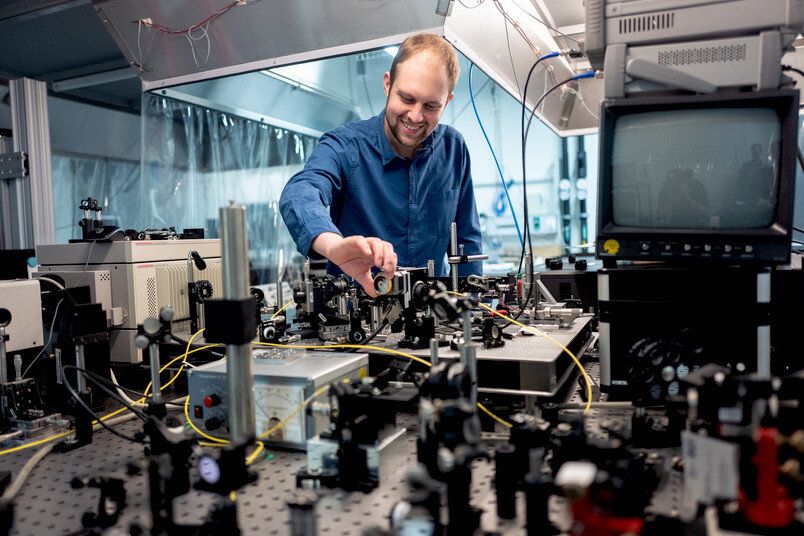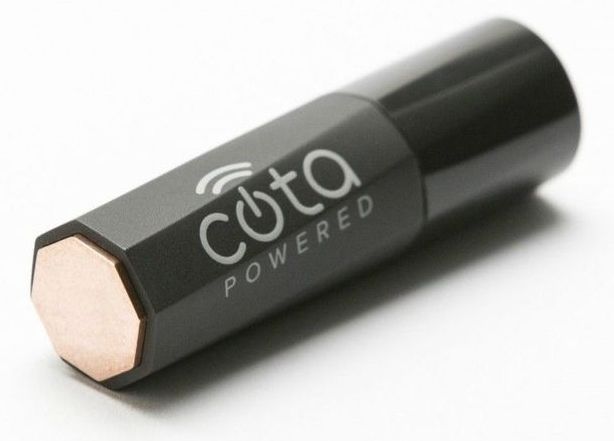Which technologies will help us explore the human ecosystem beyond cyberspace, geospace and space and understand the very meaning of our existence in the universe?



Back in the late 1990s, a traveler from Lebanon to London would have noticed something interesting about telecommunications in the two countries, while many people in Lebanon owned a mobile phone, London was still accustomed to using red telephone boxes to make calls on the run. What caused such a difference? During the Lebanese Civil War, all landline infrastructures were destroyed, and the Lebanese leapfrogged to owning mobile phones. Fast-forward 20 years to today and one can see a similar pattern in many developing countries, where landlines and personal computers are bypassed for mobile internet. 5G is going to make that shift even more dramatic and in many other similar areas, technology is enabling us to bypass existing infrastructure and to rethink the way things are made.
Manufacturing cars is highly efficient and in most 21st century facilities you hardly see any people. Everything is done by robots on a moving assembly line. But it makes you wonder if such a factory setup would make sense for new product categories, which in the beginning are a novelty at best? For example, flying cars or Unmanned Aerial Vehicles ( UAV). The questions we should be asking: How are we going to do it cost-effectively and with similar automation as automotive factories? And can Additive Manufacturing help these novel product categories excel, cut costs and completely skip the assembly line altogether? Just like when Henry Ford created the first moving assembly line back in 1913, it was then a necessity for industrial production to take place. If we wish to cut costs, simplify assembly, reduce factory footprints and part counts, Additive Manufacturing starts becoming a necessity and as a result, we can start questioning the 100-year-old assembly line.

Engineers at Ruhr-Universität Bochum have developed a novel concept for rapid data transfer via optical fibre cables. In current systems, a laser transmits light signals through the cables and information is coded in the modulation of light intensity. The new system, a semiconductor spin laser, is based on a modulation of light polarisation instead. Published on 3 April 2019 in the journal Nature, the study demonstrates that spin lasers have the capacity of working at least five times as fast as the best traditional systems, while consuming only a fraction of energy. Unlike other spin-based semiconductor systems, the technology potentially works at room temperature and doesn’t require any external magnetic fields. The Bochum team at the Chair of Photonics and Terahertz Technology implemented the system in collaboration with colleagues from Ulm University and the University at Buffalo.
Rapid data transfer is currently an energy guzzler
Due to physical limitations, data transfer that is based on a modulation of light intensity without utilizing complex modulation formats can only reach frequencies of around 40 to 50 gigahertz. In order to achieve this speed, high electrical currents are necessary. “It’s a bit like a Porsche where fuel consumption dramatically increases if the car is driven fast,” compares Professor Martin Hofmann, one of the engineers from Bochum. “Unless we upgrade the technology soon, data transfer and the Internet are going to consume more energy than we are currently producing on Earth.” Together with Dr. Nils Gerhardt and Ph.D. student Markus Lindemann, Martin Hofmann is therefore researching into alternative technologies.

“Why are we impatient? It’s a heritage from our evolution,” says Marc Wittmann, a psychologist at the Institute for Frontier Areas of Psychology and Mental Health in Freiburg, Germany. Impatience made sure we didn’t die from spending too long on a single unrewarding activity. It gave us the impulse to act.
Not long ago I diagnosed myself with the recently identified condition of sidewalk rage. It’s most pronounced when it comes to a certain friend who is a slow walker. Last month, as we sashayed our way to dinner, I found myself biting my tongue, thinking, I have to stop going places with her if I ever want to … get there!
You too can measure yourself on the “Pedestrian Aggressiveness Syndrome Scale,” a tool developed by University of Hawaii psychologist Leon James. While walking in a crowd, do you find yourself “acting in a hostile manner (staring, presenting a mean face, moving closer or faster than expected)” and “enjoying thoughts of violence?”
Slowness rage is not confined to the sidewalk, of course. Slow drivers, slow Internet, slow grocery lines—they all drive us crazy. Even the opening of this article may be going on a little too long for you. So I’ll get to the point. Slow things drive us crazy because the fast pace of society has warped our sense of timing. Things that our great-great-grandparents would have found miraculously efficient now drive us around the bend. Patience is a virtue that’s been vanquished in the Twitter age.


Want one more option for home internet? Today it was announced that Amazon is planning to launch 3,236 satellites to build a network to provide global high-speed internet. Unlike current satellite internet, these devices will be in a far lower orbit and offer far faster speeds compared to current sa…
It is a crazy thought, right?! To think that mushrooms could be alien life. But before you dismiss the idea, take a look at some of principles of the theory. The main concept was formulated by the ingenious psychonaut philosopher Terrence McKenna, and goes along following lines.
Like no other form of life on our planet, the spores of mushrooms are almost perfectly suited to space travel. They can survive high vacuum and insanely low temperatures; the casing of a spore is one of the most electron dense materials in nature, to the point where McKenna says it is almost akin to a metal; global currents are even able to form on the quasi-metallic surface of an airborne spore, which then acts as a repellent to the extreme radiation of space. It is a mind boggling thought that something could evolve to be so perfectly suited to explore the universe.
If a civilization is advanced enough, then chances are their concepts and understanding of reality would far outweigh ours. If they were advanced enough to be able to change their very genetic structure, then there would be a lot of merit in changing/evolving into a mushroom. Mushrooms are highly resilient, non-invasive, practically immortal, full of neurotransmitters, and able to weather space. It would be the perfect way to explore and colonize the galaxy. Plus once mushrooms establish themselves, they create an underground neural network of mycelium that highly resembles the neural networks of the human brain or the internet.
South Korea will become the first country to commercially launch fifth-generation (5G) services as it rolls out the latest wireless technology with Samsung’s new 5G-enabled Galaxy S10.
A personal report from the recent Undoing Aging conference in Berlin by Nicola Bagalà. The event saw many of the leading figures in aging research and rejuvenation biotechnology attend a packed conference which celebrates its second successful year.
Last Wednesday, I landed in Berlin, Germany at around 12:30. About an hour later, I was briefly in Cafè Alex, right next to the tapering TV Tower, where I met some of my colleagues from LEAF—some of whom I had never seen in person before—as well as other volunteers and members of HEALES, our friend organization. We were all there to attend the Undoing Aging 2019 conference, which would take place over the course of the next three days, bringing together experts and researchers from all over the world to discuss the latest advances, network, and share views on the biology of aging.
Thanks to video calls, meeting people face-to-face whom you’d only known through the Internet isn’t all that strange, but meeting people whom you had only read about or seen on YouTube still feels a little unreal, especially if these people are celebrities in their own field. Shortly after leaving Cafè Alex, we headed to our hotel to check in; Steve Hill and his wife Fatima—whose help over the course of my stay has been invaluable—were talking to the receptionist while Elena Milova and I were waiting right behind them. Elena and I were chatting about various things when a man who looked somewhat familiar walked through the doors; I wasn’t sure he was whom I thought he was, and as I glanced to Elena to ask for confirmation, I understood that he was indeed stem cell pioneer and AgeX CEO Mike West, who has been in the gerontology scene for quite a while now.

I’ve spent most of the past two years focusing on issues like harmful content, elections integrity and privacy. I think it’s important to define what roles we want companies and governments to play in taking on these challenges, so I wrote this op-ed laying out how regulation can help.
Tech nology is a major part of our lives, and companies such as Facebook have immense responsibilities. Every day, we make decisions about what speech is harmful, what constitutes political advertising, and how to prevent sophisticated cyberattacks. These are important for keeping our community safe. But if we were starting from scratch, we wouldn’t ask companies to make these judgments alone.
I believe we need a more active role for governments and regulators. By updating the rules for the Internet, we can preserve what’s best about it — the freedom for people to express themselves and for entrepreneurs to build new things — while also protecting society from broader harms.
From what I’ve learned, I believe we need new regulation in four areas: harmful content, election integrity, privacy and data portability.